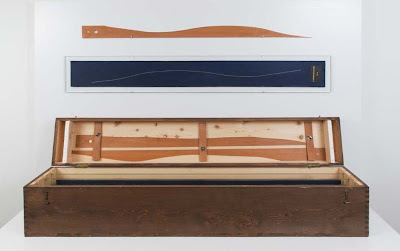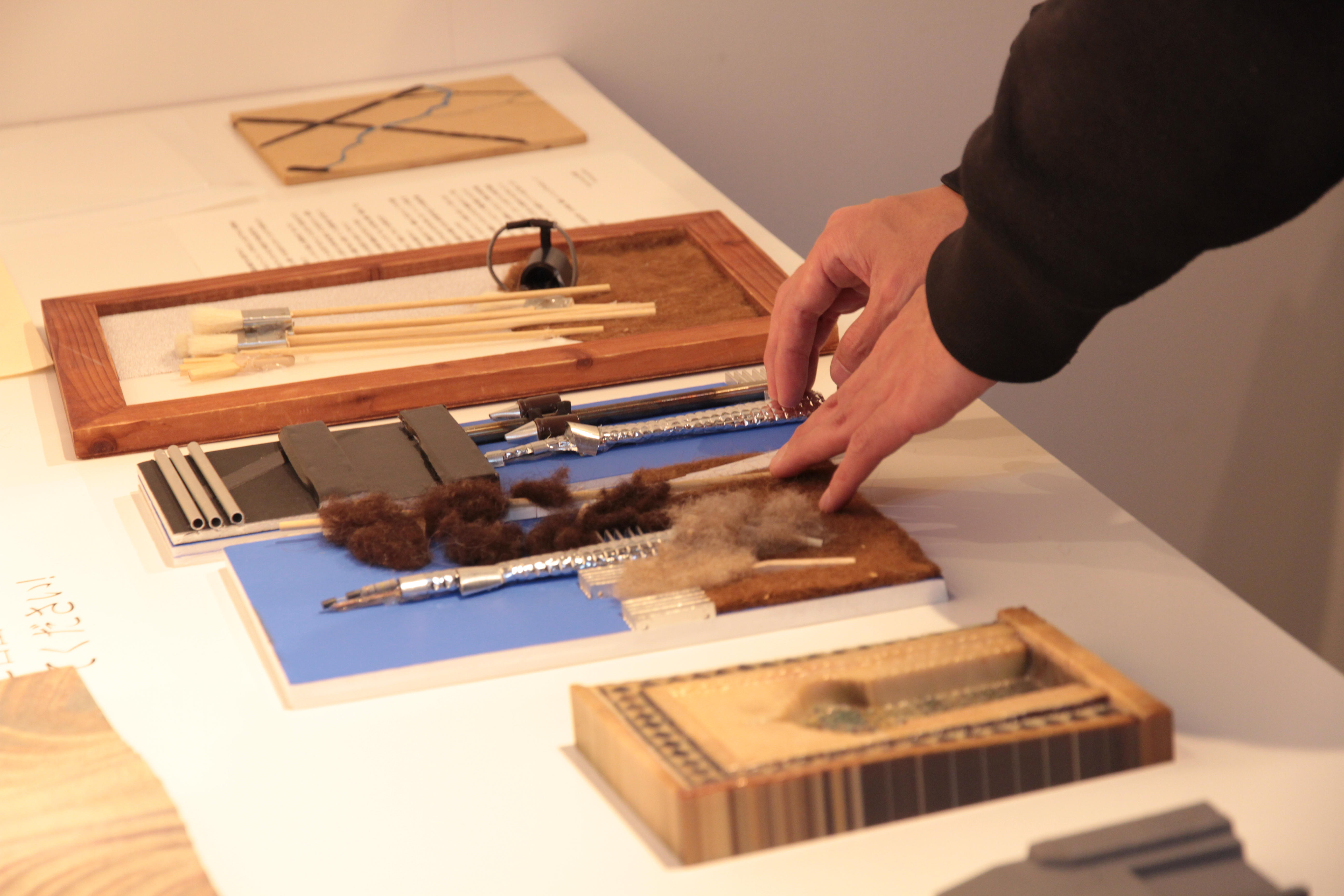Monday 9 September 2013
Sunday 5 May 2013
Lara Favaretto
Lara Favaretto. Gummo. 2007.
Carwash brushes, iron, electrical motor, electrical box, electrical wire. 200 x 369 x 120 cm.
Installation view: Castello di Rivoli Museo d’Arte Contemporanea, Turin, 2008.
Courtesy the artist and Galleria Franco Noero, Turin. Photo: Paolo Pellion. © 2012 Lara Favaretto.
Lara Favaretto. Momentary Monument IV (Kassel), Documenta 2012.
I select objects that add parallel lives to my installations, objects that already have a history, especially those that have been submitted to various kinds of energy, power, and weather conditions—all agents that intervene on the materials that compose each artifact. Central to the exhibition is the overhead scaffolding, Grid After Piet Mondrian, Composition with Red, Yellow, and Blue, 1921: a site-specific installation arrayed in the ceiling space of each gallery. Taken together, the orthogonal geometries of the pipes, threaded through with wool yarn in shades of red, yellow, blue, black, and white, replicate a 1921 composition by Piet Mondrian. I did not select the pipes: They were just there in my studio, having been procured from local building companies. Because I work with secondhand and found materials, my choices are limited to whatever is currently available. I can never determine in advance the characteristics (shape, color, size, etc.) of the materials that I am looking for. Sometimes I get objects that I really don’t like, and I could perhaps cheat and choose something nicer, or buy something new and make it look worn—but of course I can’t, because that element of randomness is central to my practice.
When installing this show (Just Knocked Out at MoMA PS1), I never felt physically present when positioning the work, at that moment of selection. Like a dictator, the scaffolding’s grid decided the placement for me. Hence the title, “Just Knocked Out,” which can mean “only” or “merely” knocked out, or it can allude to that moment in boxing when one falls and completely loses consciousness, waking at a loss of where they are, what they were doing, and where they are from. This is precisely the feeling that overcomes me when I stand beneath the scaffolding.
A deep sense of frustration persists in my work. While at first glance it may appear carefree and lighthearted, these qualities subside as one moves into each piece. For example, Tutti gia per terra (We All Fall Down) is a sealed room filled with confetti and four stage fans. The confetti may initially amuse, but you soon sense something that you can’t reach. Cordoned in a sealed room, the confetti circulates without end, forming a system with its own internal logic that cannot be breached. The viewer has the option to experience the work on a superficial or critical level: It is pegged to the individual’s desire, the extent to which he or she wants to enter the work.
So often, art is made to be put in an institution and preserved in perpetuity under Plexiglas. Yet, to me, this model no longer makes sense. When the boat was shipping my work from Italy to New York, I was hoping that it would sink and that my work would be destroyed. At MoMA PS1, the exhibition is very strong, but it’s also safe: The chances of an unexpected occurrence or effect are minimal, and as a result, the show becomes a matter of placing one piece here, one piece there. But if the boat had sunk, the exhibition would have begun afresh, with a much stronger energy and power. It would be, precisely, the absence of objects. Which is a controversial idea, of course.
Labels:
installation,
sculpture
Saturday 4 May 2013
Thursday 2 May 2013
Alison Wilding
Assembly, 1991.
Powder coated steel and PVC, 1250 x 1740 x 5470mm
This entry is partly based on an interview with Alison Wilding held on 4th November 2003.
The two parts of this sculpture are similar in shape and size but completely different in materials and character. One is a dead-end tunnel formed from four sheets of mild steel which have been powder-coated black and the other is a complex three-dimensional grid, assembled from strips of brown, transparent PVC three mm sheet, which sits in front of the tunnel in the same orientation with the tips of the bottom layer of PVC strips just inside the tunnel entrance.
In an interview in November 2003, the artist said that the forms in Assembly arise partly from the idea of monocoque (French for "single shell") construction. This technique uses the external skin of an object to support some or most of the load on the structure as opposed to using an internal framework that is then covered with a non-load-bearing skin. Looking at the two forms inAssembly, it is clear that the artist is not using this type of construction literally. She said “I wanted to start making a work that didn’t rely on the surface. I think up until that point I’d been using a lot of sheet metal. All the works contained a space so you encountered the exterior and within the exterior there was this volume or void. I completely wanted to change the way that I was working ....It’s very hard to make a new direction but in this case I wanted to turn it inside out, to make the surface what was also the core of the work”.
Labels:
sculpture
Sunday 21 April 2013
Sunday 7 April 2013
The Bride and the Bachelors: Duchamp with Cage, Cunningham, Rauschenberg and Johns | Barbican
The Bride Stripped Bare by her Bachelors, Even (The
Large Glass) 1915-23,
reconstruction by Richard Hamilton 1965-6, lower panel
remade 1985
3 Stoppages étalon (3 Standard Stoppages) 1913-14, replica 1964,
Wood, glass and paint on canvas, 400 x 1300 x 900 mm
Labels:
sculpture
Friday 15 March 2013
Sunday 3 March 2013
Sunday 24 February 2013
John Chamberlain
Dolores James, 1962.
Welded and painted steel, 72 1/2 x 101 1/2 x 46 1/4 inches (184.2 x 257.8 x 117.5 cm)
Solomon R. Guggenheim Museum, New York
Labels:
sculpture
Tuesday 22 January 2013
Subscribe to:
Posts (Atom)

.jpg)

.jpeg)

+(2012).IMG_4135.jpg)


















